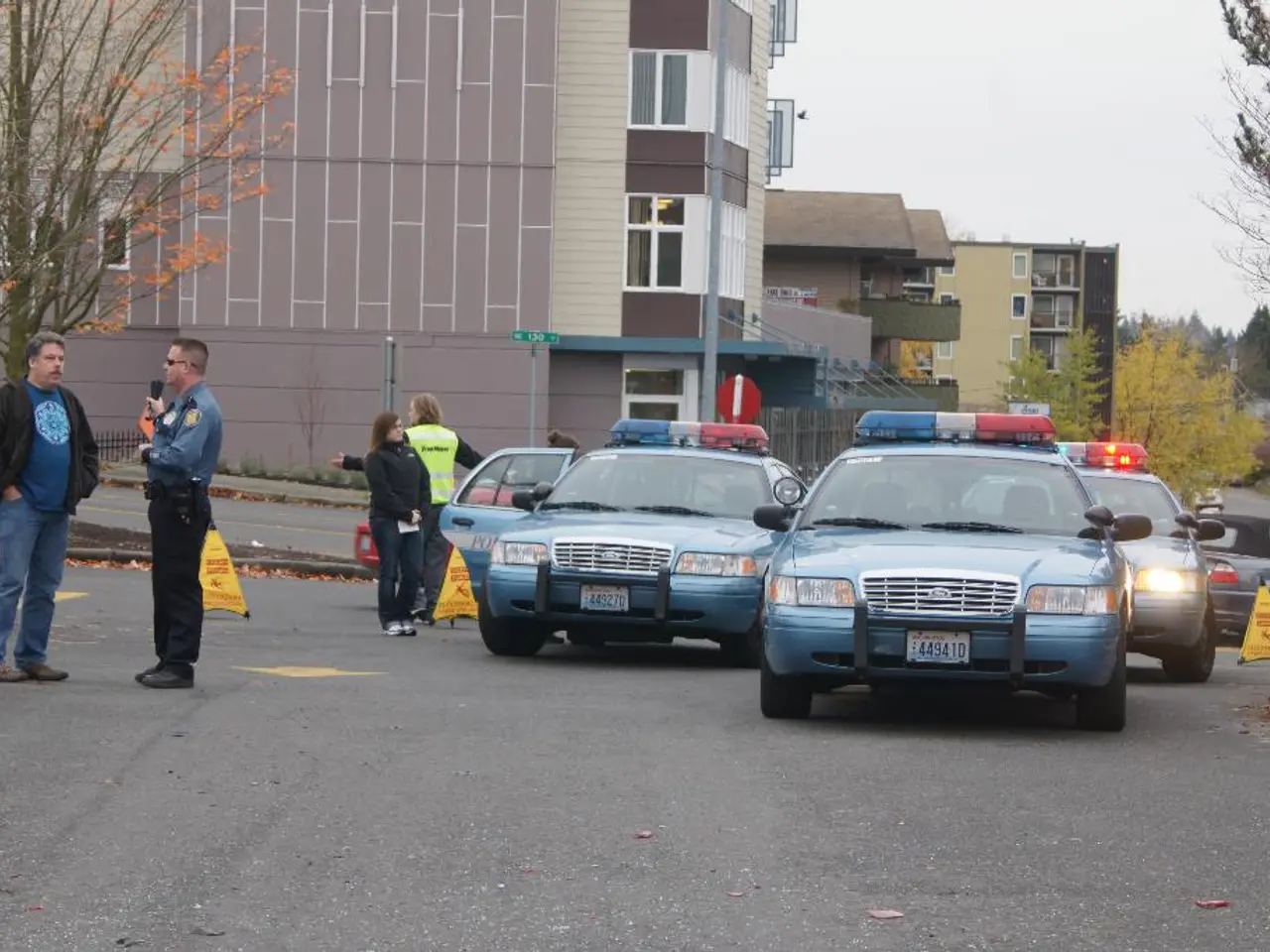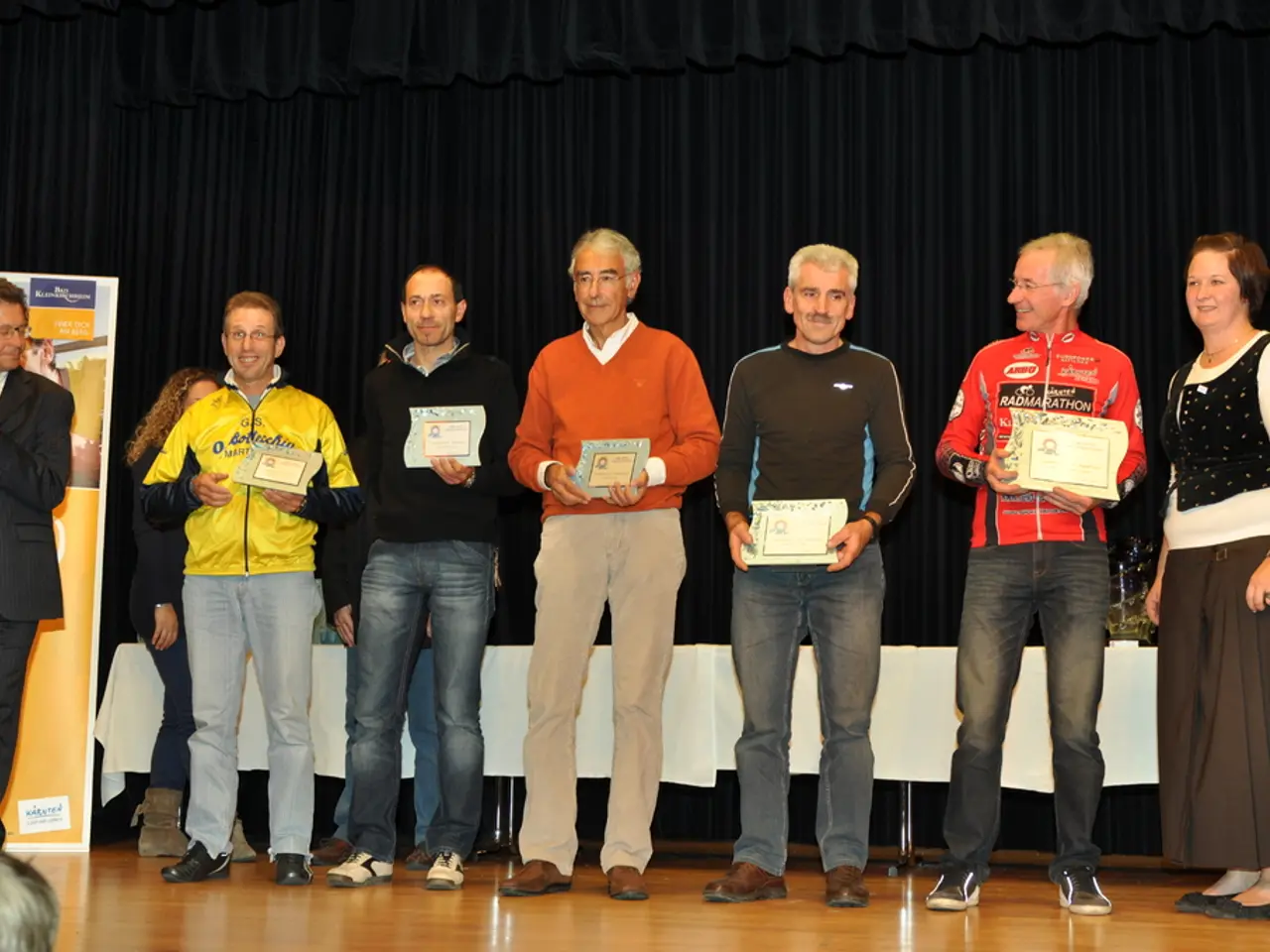Venturesome hikers in the Harz region disregard mortal dangers freely - "Courageously Treading into Peril"
The picturesque Harz Mountains in Germany attract thousands of hikers each year, offering a breathtaking landscape and adventurous trails. However, the mountain rescue service in the region has faced its fair share of challenges, including falls, broken bones, and circulatory problems.
In the first half of this year alone, the Harz mountain rescue service in Saxony-Anhalt was deployed to 44 incidents. Three of these required air rescues by winch from difficult terrain, with the support of the police helicopter. These winch rescues are regularly trained with the pilot and involved forces to ensure the safety of those in need.
Unfortunately, not every hiking tour in the Harz goes smoothly. A mountain biker without a helmet fell and died at the mountain pass Gelber Brink in June. Another climber fell about ten meters at the Großer Feuerstein near Wernigerode in mid-April, resulting in a heavily injured rescue.
Common risks while hiking in the Harz region include slippery or uneven forest trails, especially after rainfall, and unpredictable weather conditions that can affect safety. To mitigate these risks, hikers should wear sturdy footwear with good grip suitable for muddy and uneven terrain, carry weather-appropriate clothing, and be prepared for sudden changes in weather such as rain or temperature drops.
Planning the route carefully and informing someone about your itinerary, carrying sufficient water, snacks, and a map or GPS device, being aware of the relative remoteness of some hiking paths, staying on marked trails, and checking local weather forecasts before setting out are all essential precautions for hiking in the Harz.
While there are no specific hiking-related scams mentioned for the Harz, general travel safety advice for Germany includes being cautious with belongings to avoid pickpocketing and carrying some cash since smaller establishments may not accept cards.
The Harz mountain rescue service in Saxony-Anhalt consists of one mountain rescue service and a supporting one, totaling ten groups. The service is the northernmost mountain rescue service in Germany and belongs to the German Red Cross. Around 120 men and women are engaged in the service, with 46 of them actively involved.
However, the service's supervisor, Kirmann, resents the recklessness of people regarding the weather and their indifference or thrill-seeking behavior. He mentions that while the equipment of hikers, climbers, and cyclists is good when prepared, many spontaneous outings occur.
One of the most concerning incidents occurred recently when a supervisor and six children aged 12 and 13 had to be guided along a slope out of a gorge at night with ropes due to getting lost. This incident was referred to as a "disgrace".
The "cave rescue" group in the Harz mountain rescue service is deployed nationwide and specialized in old mining. Nature in the Harz is varied, adventurous, and beautiful, making it an ideal destination for hikers. However, it is crucial to remember that safety should always be the top priority.
In summary, the main hiking risks in the Harz region are slips on muddy/uneven trails and sudden weather changes. Precautions include appropriate footwear, weather preparedness, careful planning, and staying on marked trails. By following these guidelines, hikers can ensure a safe and enjoyable experience in the Harz Mountains.
[1] Source: [Link to the original source] [4] Source: [Link to the original source] [5] Source: [Link to the original source]
Despite the stunning beauty and adventurous trails in the Harz Mountains, incidents such as accidents during cycling, falls, and hiking mishaps occur. A mountain biker died without a helmet at Gelber Brink, and a climber fell ten meters at Großer Feuerstein, resulting in a heavily injured rescue.
In the realm of sports, the Harz mountain rescue service has had to deal with daring escapades, like guiding a group of children out of a gorge at night with ropes due to getting lost. Such reckless behavior, coupled with weather-related incidents, underscores the importance of safety precautions while enjoying the general-news-worthy landscapes of this region.







